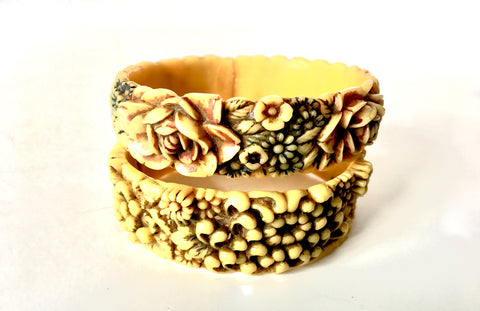talkingfashion » 1920s fashion
-
History of the Watch: A Timeless Timekeeping Accessory
The Watch: A Timeless Timekeeping Accessory
By Paige McKirahan
The neverending passage of time is what that we base all of our daily schedules on; from sleep to work to the next fun party, everything runs on the basis of time. But, what is time without a timekeeping device? Without them, we would never be quite sure if were truly on time, and for chronically late people (like myself), this would create quite a problem. People found this to be increasingly troublesome and started looking for a solution; yes, clocks on the wall tell us all we needed to know, but how would we have this knowledge if we were out and about or a clock wasnt near? This question was answered with the creation of the wristwatch in the early 1800s for the Queen of Naples.
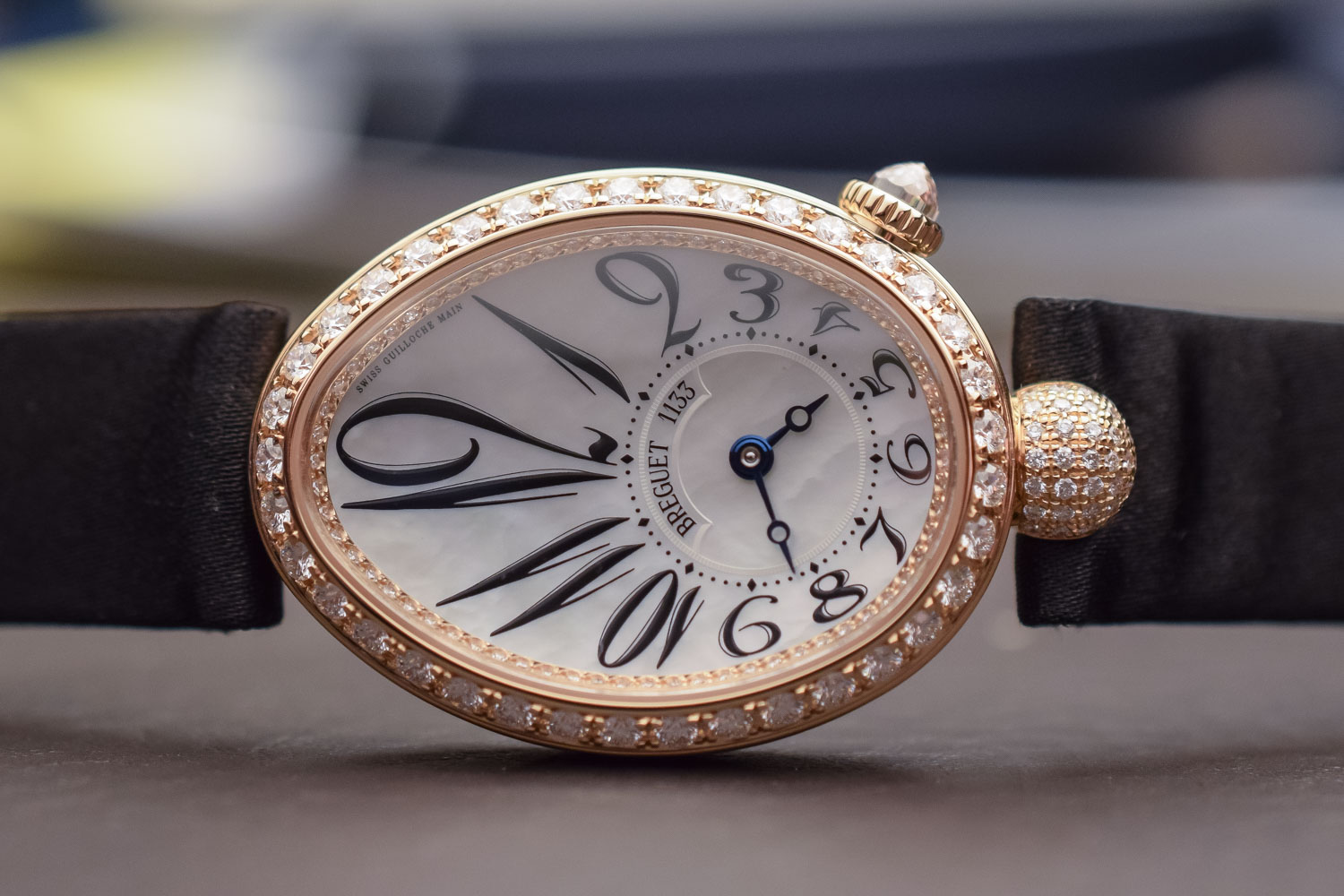
A replica of the first wristwatch
(photo credits to monochromewatches.com)
Despite the fact that arm watches were actually created in the 1570s, they were not worn on the wrist and weren't particularly popular with the public until this updated 17th century design. Arm watches were more so worn by women on account of the fact that they were prone to damage; men wore pocket watches and the first was created in 1574. Wristwatches changed this dynamic on account of the fact that men in the military advocated for the accessory as it allowed them to keep track of time with ease. Alberto Santos-Dumont, a Brazilian aviator, reached out to his friend Louis Cartier to come up with a style that of watch that would allow him to keep both hands on his controls while still being able to properly time flights. Cartier collaborated with watchmaker Edmond Jaeger to develop the Santos wristwatch, which is one of their brands cornerstone pieces.
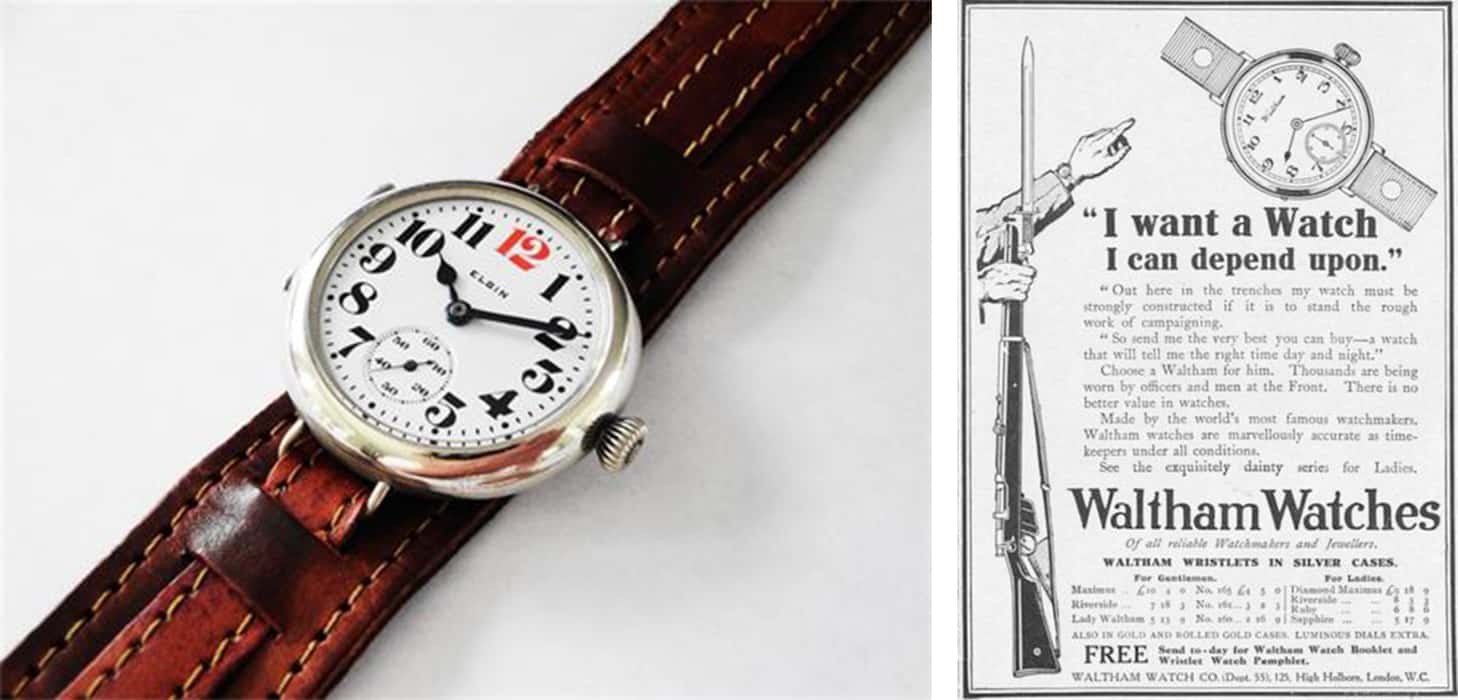
Military watch ad from WWI
(photo credits to wornandwound.com)
As we progressed towards the first World War, the popularization of watches for those in the military grew; the wristwatches they were given were referred to as “trench watches” and they established themselves as part of the Officers Kit for the war front. After this time, this accessory began to truly evolve as industrial advancements allowed for the production of wristwatches with automatic winding. John Harwood, a watch repairer, claimed patents for this ingenuity in 1923 after he was the first who managed to use the kinetic power garnered from the watches' hand movement to changing mechanisms. He then started producing these watches in a factory in Switzerland in 1928, which gave the public a chance to purchase one of his timekeeping pieces that could work for 12 hours on a full charge. In the 1950s, fully electric watches were introduced, with the balance wheel being powered by a solenoid, which is a thin wire trapped around a metallic core that procures electric currents.
This new electric watch allowed for the birth of the quartz watch, which removed all moving parts in mechanical watches; this 1969 invention instead used a battery, allowing them to be more shock absorbent and accurate without constant cleaning or oiling. Quartz watches are still manufactured today, but some luxury Swiss brands choose to create non-quartz options by hand. Today, watches can be made of stainless steel, silver, gold, titanium, carbon fibre, platinum, and aluminum. Some manufacturers even use more high tech silicons and ceramics in experimental design. Aside from regular watches, though, smart watches have made waves in wearable timepieces in the past five years and can be seen on the wrists of millions. Apple, Samsung, and Google have all created their own smart technology, opening the door for other new watches that can be connected to smart devices. Whether you are a fan of the classics or are going all digital, read on to see where your preference falls in the top 5 most iconic watches of all time!
The Cartier Santos
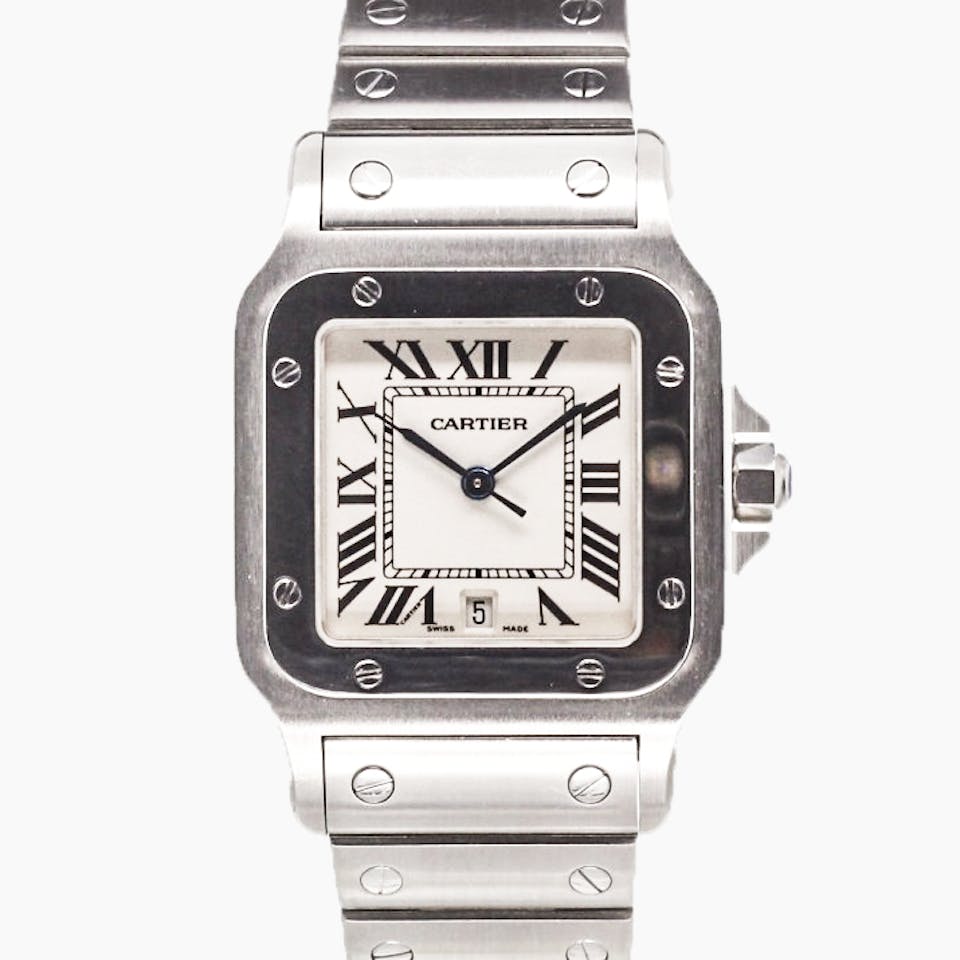
As we learned, this watch was one of the first of its kind and was created to help Alberto Santos keep time while flying his plane. Today, it is an iconic style who’s elegance and history lures in all types of buyers.
Jaeger- LeCoultre Reverso
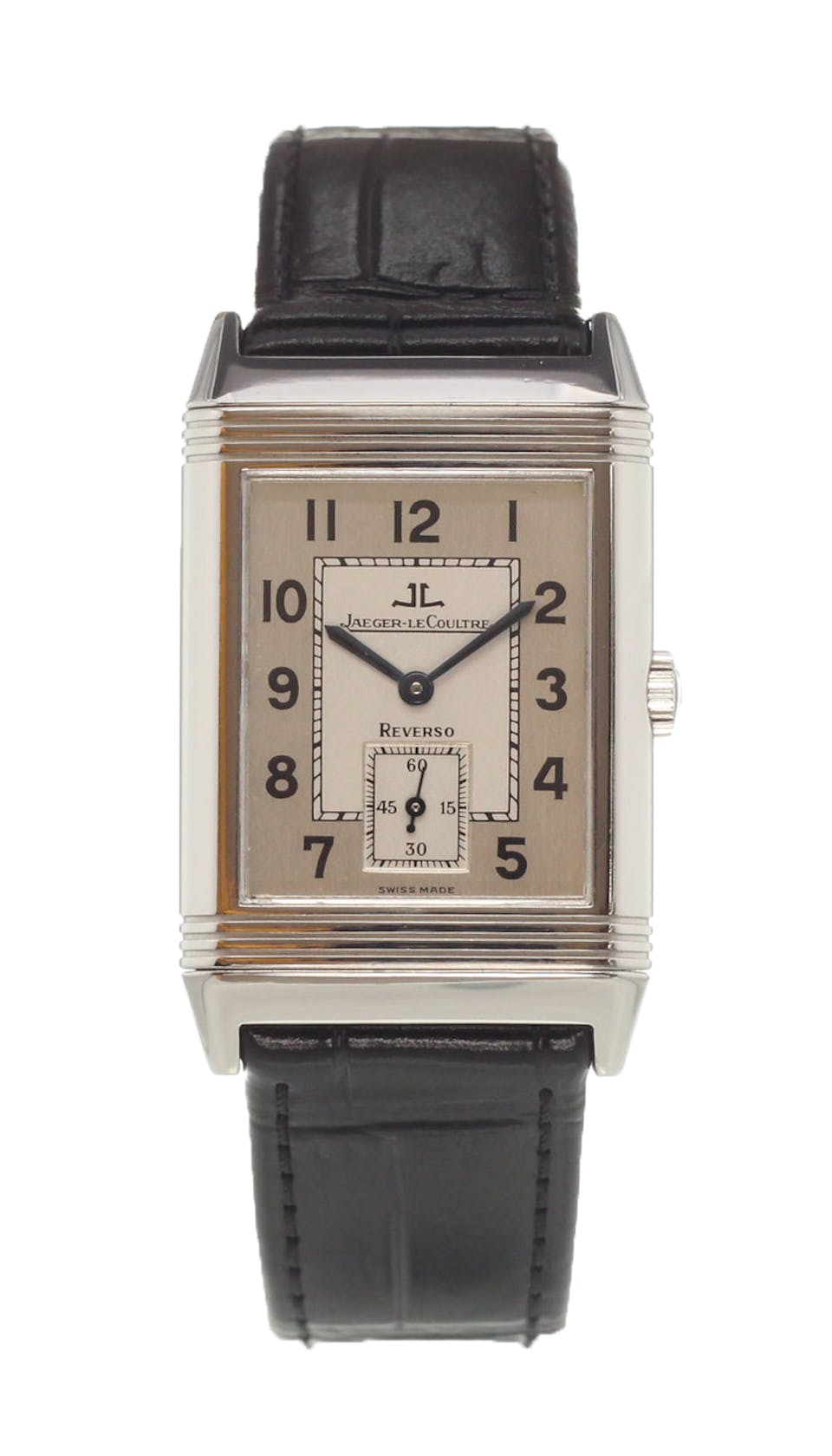
This Art Deco piece made it debut in 1931 as a watch for Britian's elite polo society. It featured a casing that was on a swivel, which ultimately protected the watch from cracks caused by force. Its classic, angular style sets it apart from the rest, appealing to collectors everywhere.
IWC Pilot’s Watch
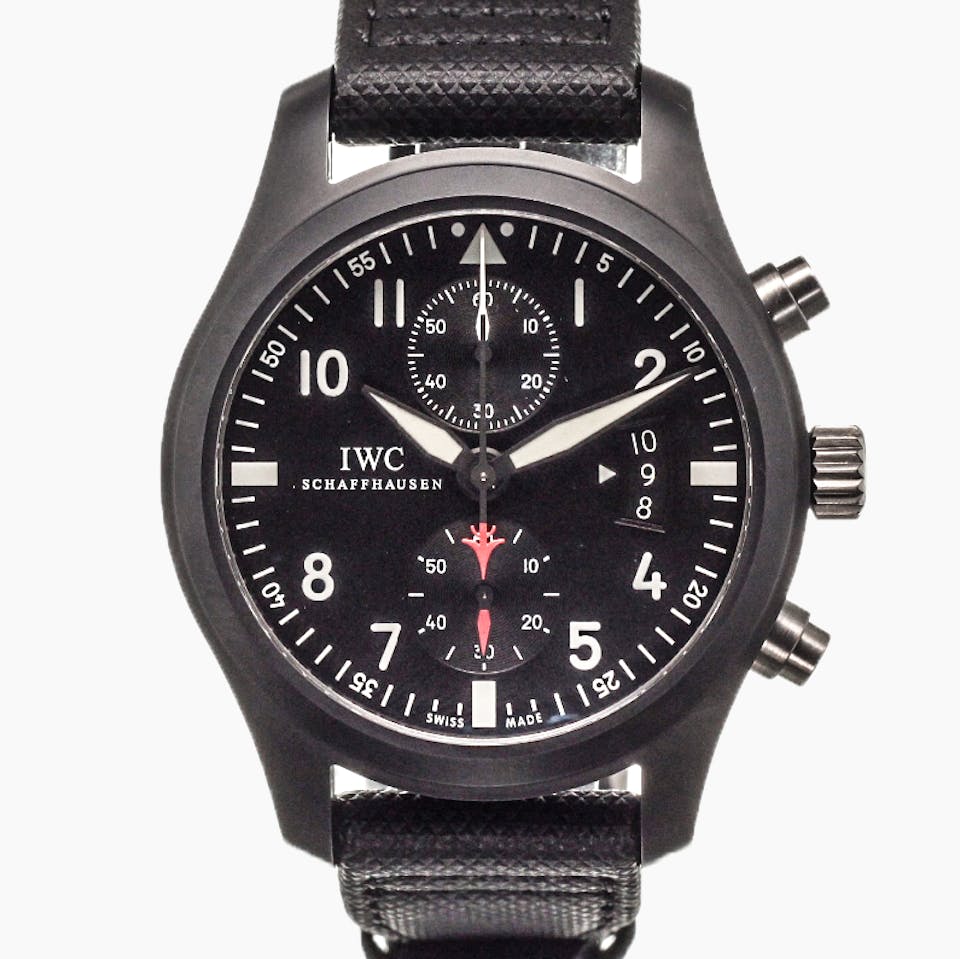
This Special Pilot's watch was the first of its kind at the time of its release by IWC in 1936; it prompted a collection of other military grade watches that captured the praise of the public for decades. This timepieces features a stainless steel waterproof casing that surrounds a softer inner cage, protecting the movement from magnetic fields.
Patek Phillippe Perpetual Calendar Chronograph

This timepiece was one of the first of its kind as it was able to keep track of the date for 200 years without adjustment. Patek released this watch in 1941 and it took the timekeeping community by storm as it was also able to measure small increments of time. Today, it is still widely sought out by collectors and leisure wearers alike.
Rolex Datejust
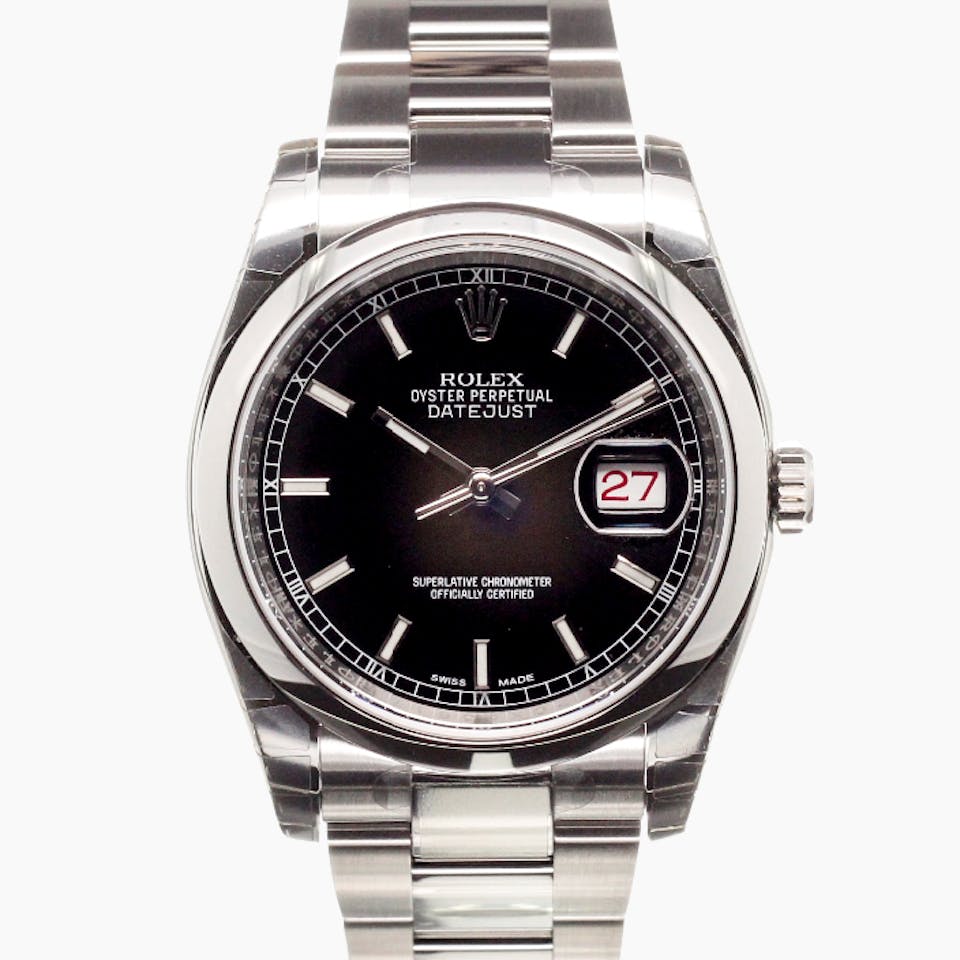
As one of the most iconic watch brands of all time, Rolex released the Datejust in 1945 and it was distinguished by its date indicator. This designs trademark was the Cyclops lense, and its original design has been nearly unchanged. A symbol of strength and intelligence, this timepiece has been worn by the likes of Winston Churchill and Dwight D. Eisenhower.
(all above photo credits to chronext.com)
If you're looking for a way to avoid being fashionably late while still being chic, check out our collection of timekeeping accessories!
-
Pioneering the Scarf Industry
Pioneering the Scarf Industry
By Paige McKirahan
Seeing as how we have already learned the history behind the magnificent accessory, we begun to wonder about the designers who paved the way for scarves to become the classic piece that they are today. Hermes, of course, burst onto the scene with their wonderful silk designs that exuded luxury and wealth, capturing the attention of everyone from starlets to the everyday person. But what about the other popular designers that took the piece and molded it into something of their own? Read on to hear of our favorite scarf designers and brands throughout time (and to find some of their pieces in our shop!)
When the brand first stepped onto the scene in 1939, it emerged under the umbrella of the Glendser Textile Co. that received its first registered trademark for lady’s scarves and handkerchiefs. In the following decades up into the 1970s, Glentex became increasingly popular and was widely known for their beaded collars and vibrant patterns. Many pieces were made in Japan out of a wide variety of fabrics, including silk and rayon. At the height of their popularity, they even partnered with our beloved Schiaparelli and Gloria Vanderbilt to create high fashion pieces!
This brand, which was popularized by their easy-to-carry rainboots, hails from our home state of Ohio! Specializing in rainwear and waterproof accessories, Totes truly began in 1942 and shot to fame after they introduced the first collapsible umbrella in 1970. From there on out, they began creating other popular rainwear, including the coveted water resistant scarf. This supermarket and drugstore brand is still operating today and boasts a large collection of colorful, waterproof accessories that even high fashion lovers love to sport!
After its conception in the ‘20s, Echo began building an impressive arsenal of patterns that would build rapport until the late ‘70s when the scarf business began to see a decline. When the creators' daughter, Dorothy, took over the company after her husband’s death, she was determined to beat the dwindling sales and did just that in 1983 when the brand made its way into the European market. After a slew of licensing agreements with fashion and home goods giants like Ralph Lauren and Laura Ashley, the company began releasing more accessories and home furnishings that expanded their profits and popularity exponentially. Today, it is still privately owned by the family and this emerging lifestyle brand still celebrates their humble roots with their 95 anniversary just having passed in September. In their blog commemorating the event, they even go as far as saying that they feel responsible for bringing the scarf to the world of fashion (Bold statement! Do you agree?)

Though there seems to be many famous Vera’s in the fashion industry (think Bradley and Wang), Vera Neumann is one of the most iconic of them all; her namesake brand made beautiful art affordable and not just a thing to be admired on the wall. With all of her scarf designs being based upon original paintings, it is evident that Vera had creative roots in textiles and illustration. When she began a silkscreen printing company with her husband George and their friend Frederick, it saw almost immediate success. In the midst of World War II, the growing company was looking for ways to continue manufacturing product despite heavy rations; she stumbled upon some parachute silk at an army surplus store and voila! Her scarf business was born. She created the first signature scarf in history with her name transferred to every product, making her a household favorite with recognition all around the country. Marilyn Monroe, Grace Kelly, and even the First Lady Bess Truman loved her designs as she requested the "Vera" fabric be used in White House Decor. Her iconic presence in both the art and fashion worlds landed her work in the Metropolitan Museum of Art, The Museum of History and Technology, and the Museum of Modern Art. She was even commissioned to paint the Foucault Pendulum in the Smithsonian, which can still be seen hanging in their offices today.
As one of the industry’s most knowledgeable scarf entrepreneurs, Elaine Gold got her start as Vera’s assistant where she was the studio business manager tasked with helping develop and market the scarf business. 19 years later, she joined another budding scarf business, Robinsons & Colluber, where she was one of the first to make waves in brand marketing for the scarf industry. She then joined another one of our designer favorites, Totes, and ran their XIIX Karats brand that she eventually bought in 1983. Changing its name to Collection XIIX, she built it into a powerhouse with licenses from Anne Klein and Jones New York. When Drew Pizzo bought her company in the ‘90s, she went on to create Elaine Gold Enterprises, which found its first license with the US Postal Service! She worked with the Met, Vera Bradley, and essentially anyone in the industry looking to promote their scarves as she was the “go to” expert in the field.
Though there are a wide variety of other scarf designers that paved the way for today’s successors, these are some of our favorites. In addition, Avon, Paoli, and Burmel created high quality designs that were affordable and can be seen in vintage shops all over the world. On the higher end, Valentino, Missoni, and Givenchy all have been creating luxury scarves adored by the industry for decades. To purchase any of these brands, check out our links throughout this post or search our collection to find some hidden gems of your own!
-
The Fascinating and Visionàire Italian Designer, Elsa Schiaparelli
Elsa Schiaparelli was an Italian fashion designer who, along with her rival Coco Chanel, is regarded as one of the most prominent figures in fashion between the two World Wars.
Schiaparelli was born in 1890 and raised in Rome, Italy. The cultural background and erudition of her family members served to ignite the imaginative faculties of Schiaparelli’s impressionable childhood years. She became enraptured with the lore of ancient cultures and religious rites. The content of her writing alarmed the conservative sensibilities of her parents, so they sought to tame her fantasy life by sending her to a convent boarding school in Switzerland. Once within the school’s confines, Schiaparelli rebelled against its strict authority by going on a hunger strike, leaving her parents no alternative but to bring her home again.
Schiaparelli was dissatisfied by a lifestyle that was refined, but ultimately cloistered and unfulfilling. Her craving for an exploration of the wider world led her to try to remedy this and when a friend offered her a post caring for orphaned children in an English country house, she saw her opportunity to leave. The placement, however, proved uncongenial to Schiaparelli. She subsequently planned a return to the stop-over city of Paris rather than admit defeat by returning to Rome and her family.
She married a charlatan, whom she got engaged after one day of dating. They moved to NY in 1916 and their lives were followed by FBI and others suspicious of his career credits along and spy actions during war times. Soon after Schiaparelli and then husband Dr. Kerlor had their daughter in 1920, he left them behind. So, in 1922, she moved back to France with her daughter "Gogo". Schiaparelli relied greatly on the emotional support offered her by her close friend Gabrielle 'Gaby' Buffet-Picabia, the wife of Dada/Surrealist artist Francis Picabia.
Schiaparelli’s design career was influenced by couturier Paul Poiret, who was renowned for jettisoning corseted, over-long dresses and promoting styles that enabled freedom of movement for the modern, elegant and sophisticated woman. In later life, Schiaparelli referred to Poiret as "a generous mentor, dear friend."
Schiaparelli had no training in the technical skills of pattern making and clothing construction. Her method of approach relied on both impulse of the moment and the serendipitous inspiration as the work progressed. She draped fabric directly on the body, sometimes using herself as the model. This technique followed the lead of Poiret who too had created garments by manipulating and draping. The results appeared uncontrived and wearable.
Schiaparelli was also renowned for her unusual buttons, which could resemble candlesticks, playing card emblems, ships, crowns, crickets, or silver tambourines. Many of these fastenings were designed by Jean Clement and Roger Jean-Pierre, who also created jewellery for her. In 1936, Schiaparelli was one of the first people to recognise the potential of Jean Schlumberger, who she originally employed as a designer of buttons.
Schiaparelli's output also included distinctive costume jewellery in a wide range of novelty designs. One of her most directly Surrealist designs was a 1938 Rhodoid (a newly developed clear plastic) necklace studded with coloured metallic insects by Clément, giving the illusion that the bugs were crawling directly on the wearer's skin. During the 1930s, her jewellery designs were mostly produced by Schlumberger, Clemént and Jean-Pierre.
Schlumberger's jewellery, with its inventive combinations of precious and semi-precious stones proved successful, prompted him to launch his jewellery business in New York at the end of the '30s. Schiaparelli also offered brooches by Alberto Giacometti, fur-lined metal cuffs by Méret Oppenheim, and pieces by Max Boinet, Lina Barrette, and the writer Elsa Triolet. Compared to her unusual couture 1930s pieces, 1940s and 1950s Schiaparelli jewellery tended to be more abstract or floral-themed.
Schiaparelli also designed the wardrobe for several films, including Moulin Rouge in which Gabor played Jane Avril. She famously dressed Mae West for Every Day's a Holiday (1937) using a mannequin based on West's measurements, which inspired the torso bottle for Shocking perfume.
Schiaparelli's fanciful imaginative powers coupled with involvement in the Dada/Surrealist art movements directed her into new creative territory. Her instinctive sensibilities soon came to distinguish her creations from her chief rival Coco Chanel, who referred to her as 'that Italian artist who makes clothes'. Schiaparelli collaborated with a number of contemporary artists, most famously with Salvador Dalí to develop a number of her most notable designs.
The House of Schiaparelli was first opened in the 1930s at 21 Place Vendôme, but was shut down on 13 December 1954. The failure of her business meant that Schiaparelli's name is not as well remembered as that of her great rival Chanel. But in 1934, Time placed Chanel in the second division of fashion, whereas Schiaparelli was one of "a handful of houses now at or near the peak of their power as arbiters of the ultra-modern haute couture....Madder and more original than most of her contemporaries, Mme Schiaparelli is the one to whom the word "genius" is applied most often". Schiaparelli relied on inspiration rather than craftsmanship and, "it was not long before every little dress factory in Manhattan had copied them and from New York's 3rd Avenue to San Francisco's Howard Street millions of shop girls who had never heard of Schiaparelli were proudly wearing her models".
-
Art Deco and the Birth of Glamour
Art Deco and the Birth of Glamour
by Paige McKirahan
In a time when the stock market followed the length of lady’s skirts, a new era of art and fashion urged us away from the soft tightness of Art Nouveau and marked the beginning of bigger experimentation within these mediums. This new movement, affectionately known as the Art Deco era, spanned from the ‘20s to the mid ‘30s and brought airy silhouettes, abstraction, and fantasy to the forefront at the conclusion of World War I in 1918. After women took up hard physical work in the absence of men, they had no interest in returning to the constrictive lifestyle guidelines they once were forced to adhere to. The ‘20s became an age of financial prosperity and luxury aesthetics, with the youthful generation taking hold of post war society and creating a type of culture that prompted innovation and celebrated eccentricity.

As the economy grew, hemlines slowly climbed; by 1919, we saw skirt lengths hit mid-calf and they continued creeping up to hit the knee in 1925. During this time, dress forms moved to a more semi- fitted silhouette with dropped waists, starkly contrasting the corseted, high-waisted style of the preceding era. Up to this point, fashion had never seen a silhouette of this type and it allowed designers to innovate with new methods of seaming, draping, beading, and fabric use. Menswear and sportswear busted onto the scene and opened the door for the use of knits, leather, and rayon, all of which became important materials of the time. Of course, as we all know, this is the era of the flapper; this short lived phenomenon was a physical embodiment of glamour and the rejection of societal norms popularized in what is referred to as the Jazz Age.

Dresses by Coco Chanel c. 1925
(photo credit to langantiques.com)
Though Art Deco does continue with the 20th centuries’ celebration of the female figure, it takes a more sensuous approach with semi- abstract depictions of the body. Contemporary artistic movements such as cubism and futurism seeped into clothing design, favoring the styles’ interests in technological and geometric structures. This age also found inspiration in industrial landscapes with metallic color palettes and clean lines. Aside from the modern influence of the time, jewelry and clothing also found inspiration in archeological discoveries in Egypt; design motifs including pyramids, lotus blossoms, scarabs, and anything to do with ancient pharaohs became enormously popular along with Indian, Persian, and Chinese aesthetics.
Art Deco jewelry played with the geometric and industrial based trademarks of the movement and there were essentially two major schools of jewelry design: bijoutiers-artises and bijoutiers- joailliers. The former emphasized design over monetary value and the ladder used more precious materials to outline designs and compliment diamonds, prioritizing glamour over construction. Gold began to lose its popularity as platinum and its cheaper substitute, osimor, came into circulation as it was strong and required less metal to securely hold gems. Earrings had sharp corners and were feminine, accessorizing shorter hairstyles that were popularized in the ‘20s and ‘30s. Necklace lengths became longer in order to compliment shorter hemlines and deeper necklines, commonly featuring geometric pendants or tassels. Pearl necklaces were also a staple as the production of cultured pearls allowed them to be created in mass quantities. Popular jewelry materials of the time included a variety of synthetic plastics, such as bakelite, and other wares that could imitate gemstones, bone, and other expensive natural materials.

Art Deco Cartier Necklace c. 1929
(photo credit to langantiques.com)
Though fashion had to be rationed in the 1930s when the stock market crashed, jewelry arts seemed to continue to thrive and were revolutionized to become the focal points of outfits as buying and creating new clothing was not a priority. Large brooches, flashy ear clips, thick bracelets, and ornate dress clips were adorned with gemstones and diamonds in an almost theatrical way, allowing women of the time to create endless looks despite their limited wardrobes.
The key designers of this period, Coco Chanel and Elsa Schiaparelli, were well known rivals and fashion icons. Lovers of art and glamour, they are cornerstones in this new revolution of women’s style and created pieces that are still discussed in modern times. Chanel began her career in fashion in the early 1900s, but truly became a household name when she launched Chanel No. 5 in the early ‘20s. Then, in 1925, she released the now emblematic Chanel suit; the collarless jacket and well fitted skirt borrowed motifs from menswear and allowed women to move away from confining garments and into a new realm of comfort and freedom. Her little black dress design also was also revolutionary because it framed black as something that could be glamorous rather than a color used for mourning. Her bag designs were in a league of their own, being some of the first to incorporate shoulder straps and her classic double C logo. These Chanel pieces have endured for almost a century and have been seen in some of the most historically significant moments of all time (think Jackie O’s pink Chanel suit!).


Chanel’s iconic suit and little black dress worn by none other than Audrey Hepburn
(image credit to Google images)
Elsa Schiaparelli was a couture- minded designer who found most of her inspiration from artists of the era. She was a nonconformist, using eclectic and unique aesthetics to create clothing that were art pieces in their own right. She collaborated with artists frequently and Salvador Dali became her creator of choice as his surrealist tone complimented her outrageous taste. They created designs that are still coveted in both the fashion and art worlds and they can be seen in The Met where they celebrate her genius in their costume institute. She truly emerged into fashion when she presented her first collection of sweaters in 1927; the designs featured geometric shapes and were hand knit in her apartment in Paris. The groundbreaking couturiere then began using visible zippers in her pieces, which was unheard of at the time being a fairly new invention. She created a swimsuit with a built in bra and brought colored hosiery to the forefront of fashion, shooting herself to superstar status. Like Chanel, she also created a legendary perfume line and has been a true gift to pop culture for decades.

Schiaparelli and Dali’s most iconic collaborations
(photo credit to Google images)
As our generation rapidly moves towards a new ‘20s, it would be remiss to not wonder what types of trends we will see in a decade that has historically been so beloved in pop culture. Everyone from haute couture designers to filmmakers adored the Art Deco aesthetic and have paid homage to the glamourous style of the era with revivals occurring frequently throughout the past 100 years. Chicago and The Great Gatsby gave us a glimpses of the period on the big screen and designers like Yves Saint Laurent, Galliano, and Diane von Furstenberg resurrected this aesthetic on the runway. We see the 1920s as an of idealized portrayal of youth, glamour, sexuality, and this romanticization has only been strengthened over time. To prepare for the new roaring ‘20s, search our collection for some Art Deco pieces that truly never go out of style! Here some of our favorites:
-
Celluloid, Bakelite, and Plastic: What Are They and How Are They Different?
Celluloid, Bakelite, and Plastic: What Are They and How Are They Different?
By Paige McKirahan
You walk into Barney’s New York with the intention of accessorizing for a night on the town and come to find bangles of all colors. They’re beautiful, light, and handmade. You wonder how normal plastic could look so elegant and check the tag, realizing it is made of vintage bakelite. What is this gorgeous material?
Celluloid and bakelite are vintage jewelry staples often mistaken for the normal plastics that are usually casted to make jewelry. These materials are among some of the first man made plastics on the market. Celluloid predates bakelite and was created in an attempt to win a contest calling for someone to create a substitute for ivory in the 1860s. Though it did not win the contest, its creator, John Hyatt, chose to begin a manufacturing company that used the plastic to create billiard balls. The problem, though, was that the material was flammable; it would create small explosions on billiard tables if the balls knocked together! It also constantly sparked fires in hot projection rooms on movie sets when used to create movie film. To identify this plastic, you don’t need to wait for it to accidentally catch fire; the easiest way is to rub the piece vigorously and smell it. If it is real celluloid, it should smell similar to a ping pong ball.
Now, when Bakelite emerged on onto the scene in 1909, it made a sort of different explosion. It became wildly more popular than celluloid because of the simple fact that it didn’t quite literally explode and was more lightweight. When it first came into circulation, it was used primarily for industrial purposes until it started becoming available in a variety of colors. This inexpensive material then became a huge favorite of jewelry makers and differs from regular plastic jewelry as it is hand carved or polished into its design. You can check to see if your bakelite isn’t an imposter by using the 409 test. You dip a cotton swab in 409, the common household cleaner, and touch a small area of the piece. Be sure to touch a part of the jewelry that will not be seen! If it is true Bakelite, it will leave a yellow stain on the cotton swab.
As a collector or simply a jewelry lover, it pays to know if you have a piece made with one of these materials as their value has only increased over the past few decades. Authentic pieces can sell for thousands of dollars and are coveted by many in the collecting community. So now that you know the what and how on celluloid and bakelite, we invite you to pull out your vintage pieces and start testing!



















